1. Overview of Ma Phuc Pass
Ma Phuc Pass is a spectacular mountain pass, located about 30 km from Cao Bang city, on National Highway 3 leading to Ban Gioc Waterfall and the border town of Tra Linh. Stretching over seven winding slopes, the pass is surrounded by towering limestone mountains on both sides, creating a beautiful natural gateway to the Northern highlands.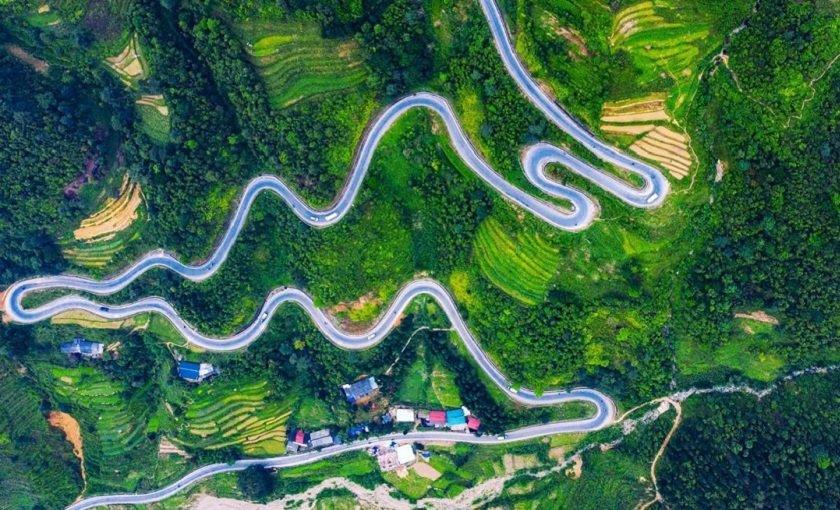 At an altitude of about 700 meters above sea level, Ma Phuc Pass is considered one of the most beautiful passes in Cao Bang, not only because of its majestic landscape but also because of its cultural significance.
Beyond its landscape, the pass carries deep cultural meaning. According to legend, it is linked to Nung Chi Cao, a national hero who fought bravely against the Song Dynasty in the 11th century. After his defeat, both he and his horse fled to this pass. Exhausted, the horse knelt in surrender, giving the pass its name: “Ma Phuc”, meaning “Horse Submission”.
At an altitude of about 700 meters above sea level, Ma Phuc Pass is considered one of the most beautiful passes in Cao Bang, not only because of its majestic landscape but also because of its cultural significance.
Beyond its landscape, the pass carries deep cultural meaning. According to legend, it is linked to Nung Chi Cao, a national hero who fought bravely against the Song Dynasty in the 11th century. After his defeat, both he and his horse fled to this pass. Exhausted, the horse knelt in surrender, giving the pass its name: “Ma Phuc”, meaning “Horse Submission”.
2. Suggested Ma Phuc Pass Itinerary
2.1. Day 1 – Journey into the Highlands
Departing from Cao Bang city, follow Highway 3 towards Quang Hoa and Tra Linh. The journey to Ma Phuc Pass takes about 30 – 45 minutes, covering a distance of about 20 km. The majestic Ma Phuc limestone mountain range appears before your eyes. Seven sharp bends offer panoramic views of terraced fields and towering limestone mountains. Along the way, stop for lunch in a nearby village or at a small local eatery to try Cao Bang food such as smoked buffalo meat, roasted chestnuts, sticky rice, and freshwater fish. If your trip coincides with the 3rd, 8th, 13th, 18th, 23rd, or 28th of the lunar month, don’t miss Ma Phuc Market, where Tay, Nung, and Dao ethnic groups gather in a lively exchange of goods and traditions. This market offers a unique insight into the daily life and traditions of the Cao Bang people, and is a must-see destination for anyone visiting the area.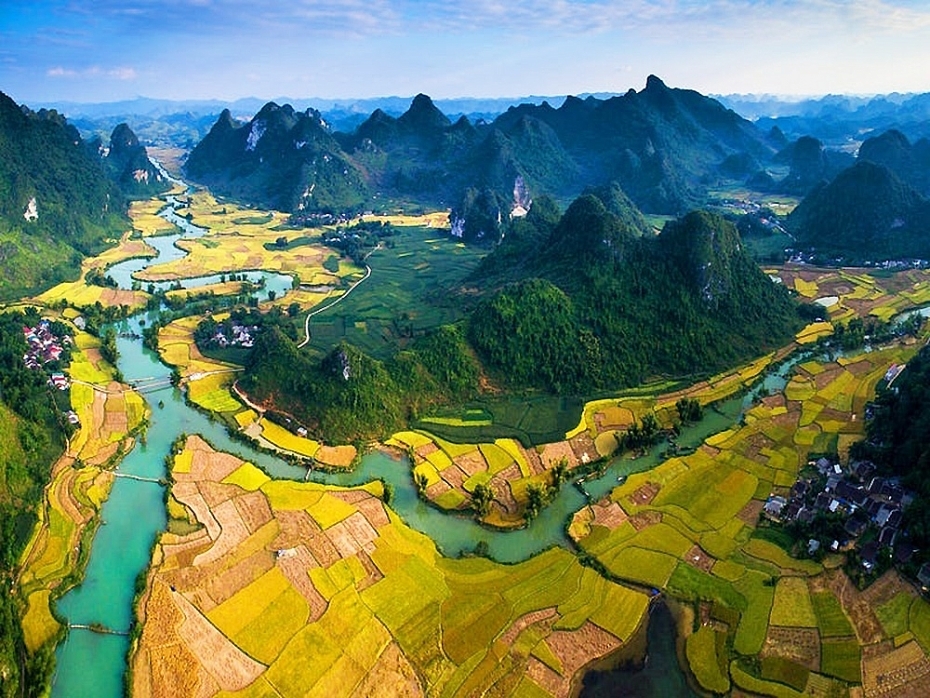 Ma Phuc Pass is also part of the Non Nuoc Cao Bang UNESCO Global Geopark, where basalt rocks are hidden in limestone cliffs. In the late afternoon, you will see the brilliant sunset from Ma Phuc Pass, dyeing the valley and mountains in gold.
When night falls, visit a homestay in Quang Hoa or Tra Linh. Dinner with a local family is not only about food but also about stories, traditions, and hospitality. Compared to hotels in Cao Bang, homestays bring you closer to the daily life of the locals.
Ma Phuc Pass is also part of the Non Nuoc Cao Bang UNESCO Global Geopark, where basalt rocks are hidden in limestone cliffs. In the late afternoon, you will see the brilliant sunset from Ma Phuc Pass, dyeing the valley and mountains in gold.
When night falls, visit a homestay in Quang Hoa or Tra Linh. Dinner with a local family is not only about food but also about stories, traditions, and hospitality. Compared to hotels in Cao Bang, homestays bring you closer to the daily life of the locals.
2.2. Day 2 – Hidden Gems and Ban Gioc Waterfall
On the second day, venture further northeast to discover Ban Gioc Waterfall, about 60 km from Ma Phuc Pass, one of the largest and most beautiful waterfalls in Asia. Along the way, take time to explore hidden natural wonders near Ma Phuc Pass. Just a short walk from Ma Phuc Pass, Angel Eye Mountain is a stunning natural wonder resembling a giant eye nestled in the middle of a limestone mountain peak.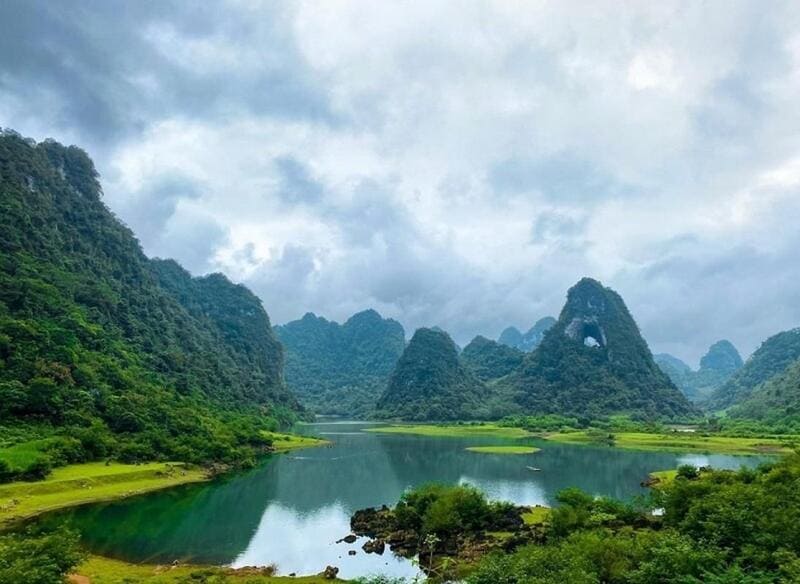 Located near Ma Phuc Pass, Thang Hen Lake is a peaceful, beautiful lake surrounded by mountains and jade forests. The lake is part of a network of 36 interconnected lakes, with clear water and a peaceful atmosphere, making it a great place to relax and enjoy the natural beauty of Cao Bang. After enjoying a picnic near Ban Gioc Waterfall or lunch at a nearby restaurant, travelers can then explore the surrounding villages before returning to Cao Bang City.
With this two-day journey, travelers will truly admire the entire beauty of Ma Phuc Pass, from the breathtaking landscape to the rich cultural traditions and authentic highland life.
Located near Ma Phuc Pass, Thang Hen Lake is a peaceful, beautiful lake surrounded by mountains and jade forests. The lake is part of a network of 36 interconnected lakes, with clear water and a peaceful atmosphere, making it a great place to relax and enjoy the natural beauty of Cao Bang. After enjoying a picnic near Ban Gioc Waterfall or lunch at a nearby restaurant, travelers can then explore the surrounding villages before returning to Cao Bang City.
With this two-day journey, travelers will truly admire the entire beauty of Ma Phuc Pass, from the breathtaking landscape to the rich cultural traditions and authentic highland life.
3. Ma Phuc Pass map
To fully explore Ma Phuc Pass, it is important to know its location. Travel along National Highway 3, about 30 km from Cao Bang city. Over a distance of 3.5 km, Ma Phuc Pass includes seven sharp turns, cutting across the majestic limestone mountains, and it becomes one of the most spectacular passes in Northern Vietnam.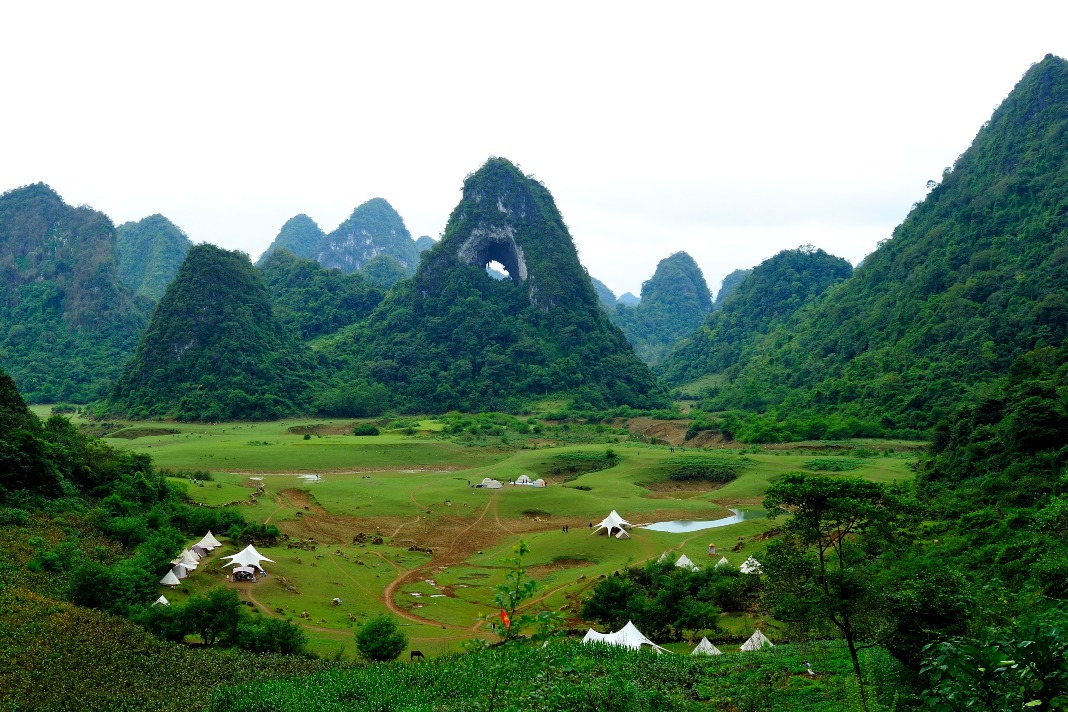 On the map, you will see that Ma Phuc Pass is not only a scenic stop but also a gateway to many nearby attractions. Travelers often combine the journey through the pass with a visit to Mat Than Mountain, Thang Hen Lake, and other prominent attractions of Cao Bang Geopark. Remember to download offline maps, as mobile signals in the area can be unreliable.
On the map, you will see that Ma Phuc Pass is not only a scenic stop but also a gateway to many nearby attractions. Travelers often combine the journey through the pass with a visit to Mat Than Mountain, Thang Hen Lake, and other prominent attractions of Cao Bang Geopark. Remember to download offline maps, as mobile signals in the area can be unreliable.
4. Tips for visiting Ma Phuc Pass
4.1. Best time to visit
The best months are from October to April, when the weather is cool, the skies are clear and the surrounding rice fields turn golden or lush green. Avoid the peak rainy season (June -August), as slippery roads and fog can make the trek treacherous.4.2. Transportation
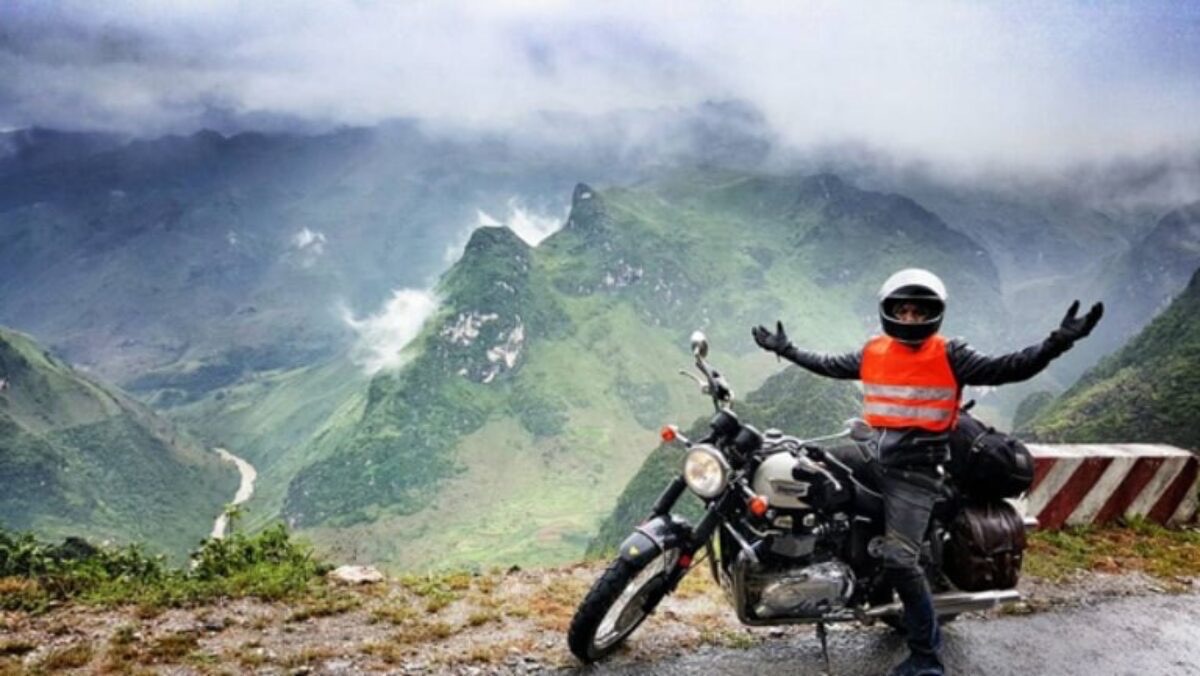 The best way to explore Ma Phuc Pass is by motorbike, as you can fully enjoy the winding roads and stop at the attractions. If you are not confident in driving, consider hiring a local driver or joining a guided tour to ensure safety.
The best way to explore Ma Phuc Pass is by motorbike, as you can fully enjoy the winding roads and stop at the attractions. If you are not confident in driving, consider hiring a local driver or joining a guided tour to ensure safety.
4.3. What to bring
Bring a light jacket even in the warmer months, as the highland weather can change quickly. A camera or drone is a must to capture the stunning views. Snacks and water are helpful, as shops are few and far between along Ma Phuc Pass.4.4. Combine with nearby attractions
Plan your itinerary to visit nearby popular attractions such as Angel Eye Mountain and Thang Hen Lake, just a short drive away. This will make your trip more complete and help you discover the cultural and natural diversity of Cao Bang.4.5. Respect local culture and nature
Ma Phuc Pass is not only a scenic spot but also a part of the local people’s lives. Please care for the environment, avoid littering, be friendly to the locals and respect their cultural traditions.CONCLUSION
Ma Phuc Pass is more than just a road; it is a journey into the heart of Cao Bang’s natural beauty and cultural heritage. From its dramatic landscapes and historic legends to nearby hidden gems like Angel Eye Mountain and Thang Hen Lake, it offers travelers a truly immersive experience.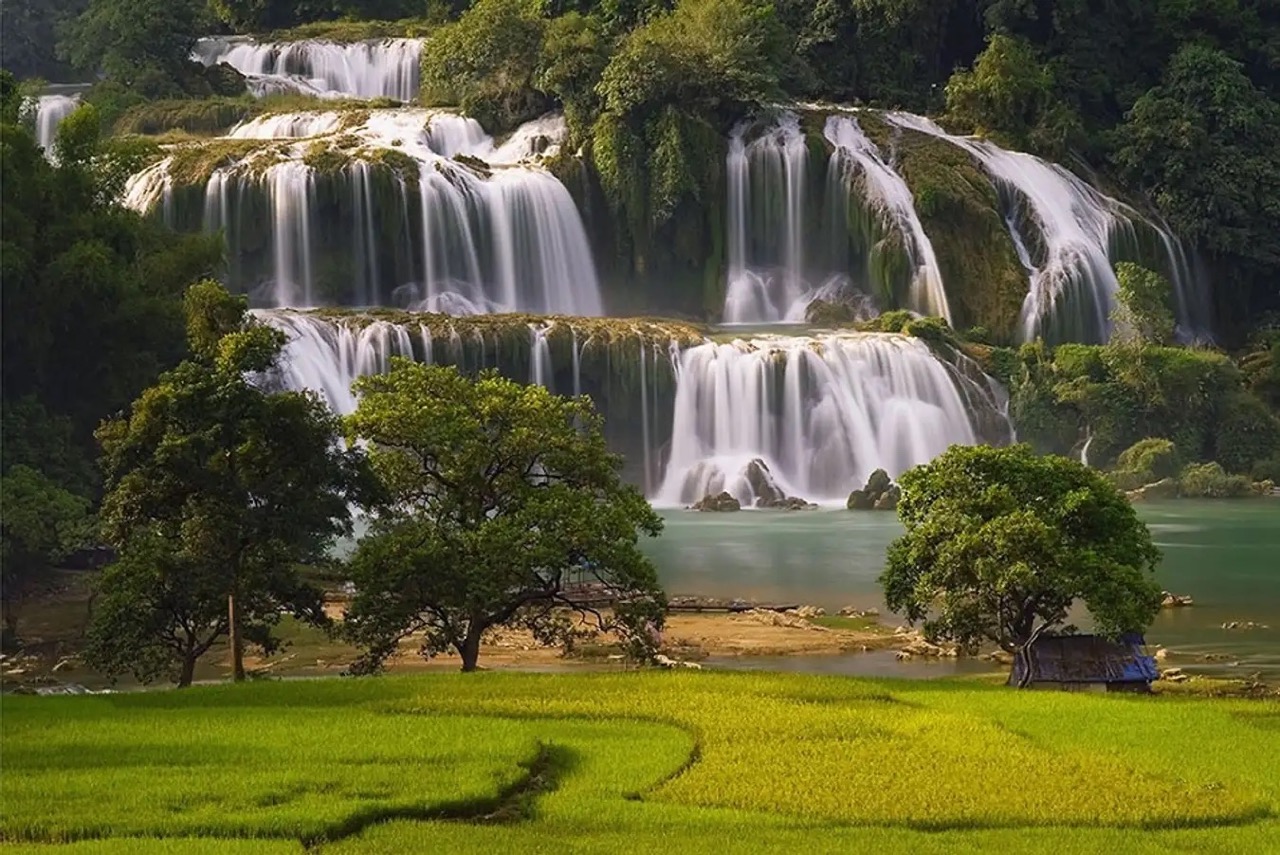 If you want to explore Ma Phuc Pass and other wonders of Cao Bang in a meaningful way, join YESD Travel. As a social enterprise, YESD connects travelers with authentic experiences while supporting local communities, preserving cultural heritage, and promoting sustainable tourism. With YESD, you won’t just see Cao Bang, you’ll make a positive impact along the way.
If you want to explore Ma Phuc Pass and other wonders of Cao Bang in a meaningful way, join YESD Travel. As a social enterprise, YESD connects travelers with authentic experiences while supporting local communities, preserving cultural heritage, and promoting sustainable tourism. With YESD, you won’t just see Cao Bang, you’ll make a positive impact along the way.